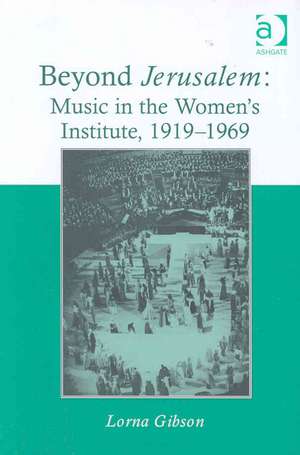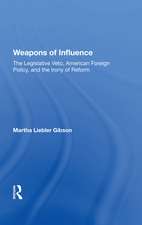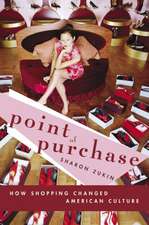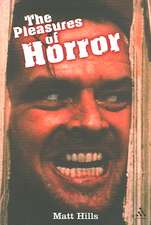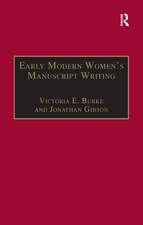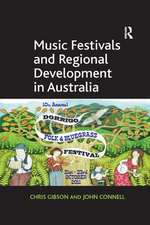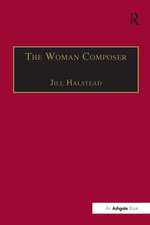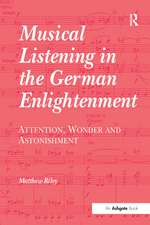Beyond Jerusalem: Music in the Women's Institute, 1919–1969
Autor Lorna Gibsonen Limba Engleză Hardback – 28 feb 2008
| Toate formatele și edițiile | Preț | Express |
|---|---|---|
| Paperback (1) | 469.34 lei 43-57 zile | |
| Taylor & Francis – 23 noi 2016 | 469.34 lei 43-57 zile | |
| Hardback (1) | 1057.89 lei 43-57 zile | |
| Taylor & Francis – 28 feb 2008 | 1057.89 lei 43-57 zile |
Preț: 1057.89 lei
Preț vechi: 1290.10 lei
-18% Nou
Puncte Express: 1587
Preț estimativ în valută:
202.42€ • 211.92$ • 167.49£
202.42€ • 211.92$ • 167.49£
Carte tipărită la comandă
Livrare economică 07-21 aprilie
Preluare comenzi: 021 569.72.76
Specificații
ISBN-13: 9780754663492
ISBN-10: 0754663493
Pagini: 216
Dimensiuni: 156 x 234 x 14 mm
Greutate: 0.54 kg
Ediția:1
Editura: Taylor & Francis
Colecția Routledge
Locul publicării:Oxford, United Kingdom
ISBN-10: 0754663493
Pagini: 216
Dimensiuni: 156 x 234 x 14 mm
Greutate: 0.54 kg
Ediția:1
Editura: Taylor & Francis
Colecția Routledge
Locul publicării:Oxford, United Kingdom
Cuprins
Contents: Introduction; Music policy and its implementation in the Women's Institute; Education, empowerment and The Acceptable Face of Feminism; The changing roles of folk song and part song in the Women's Institute; Folk Songs of the 4 Seasons and the first national singing festival; The Brilliant and the Dark and the 2nd music festival; Afterburn: the National Society Choir, 1969-1975; Conclusion; Bibliography; Appendices; Index.
Notă biografică
Lorna Gibson is Manager of the National Medical Laser Centre at University College London, UK.
Recenzii
’... an extremely well-researched book whose strength lies in its detailed presentation of the changing face of music in the NFWI an the position of the organisation in the wider music scene. It is an especially valuable contribution to research on women's groups...’ Women's History Magazine ’At the meetings there was a ritual singing of Parry's Jerusalem! One excellent aspect of this book are the appendices dealing with this famous unofficial national anthem heard every year at the Last Night of the Proms. The story of it is worth reading and it was news to me for the most part.’ The Delian
Descriere
Music in the Women's Institute has become stereotyped by the ritualistic singing of Jerusalem at monthly meetings. Indeed, Jerusalem has had an important role within the organization, and provides a valuable means within which to assess the organization's relationship with women's suffrage and the importance of rurality in the Women's Institute's identity. However, this book looks beyond Jerusalem by examining the full range of music making within the organization and locates its significance within a wider historical-cultural context.
